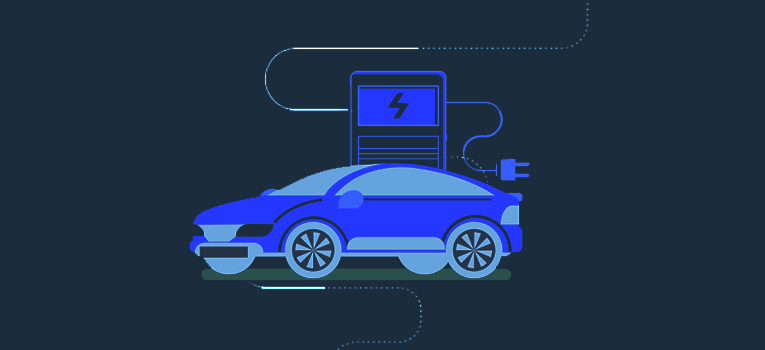Improving Multi-Speed Transmissions in Electric Vehicles
Electrification in the automotive sector is already on the boom, and companies are exploring innovative technologies such as AC & DC motors and high-density batteries for electric vehicles. As conventional internal combustion engines deliver efficient power in a specific RPM range, they require gears to deal with torque and speed requirements. Unlike IC engines, electric motors do not have a limited rpm range and can provide full torque even at zero speed without needing any gearbox. But when it comes to operating electric motors at different rates, there are variations in electric motors’ efficiency.
On the other hand, adding a gearbox or multi-speed transmission to EVs leads to increased cost, complexity, and sometimes additional components such as a clutch, which adds more weight to the vehicle.
Let’s look at some solutions from critical companies in the electric vehicles industry providing multi-speed transmission.
Recently, the Canadian supplier, Inmotive, introduced the world’s most efficient two-speed transmission for electric vehicles and claimed up to 15% more efficiency. It means that there is a need for smaller batteries, less expensive electric motors, and inverters for the same performance and range. Also, acceleration time is improved by 15%, indicating higher performance.
Ricardo has also developed high-performance & compact drivetrain for passenger cars & heavy-duty vehicles. The efficiency of this multi-speed powertrain is claimed to be increased by up to 20%.
Porsche’s Tycan has recently got a two-speed transmission for improved low-speed acceleration & enhanced efficiency at high speeds. This improvement led to a higher driving range or fitting a smaller battery in the same box.
German Manufacturer ZF has also suggested that electric vehicles attain higher top speed and range by integrating multi-speed gearboxes with electric motors. Recently, ZF has introduced a 2-speed e-drive for electric cars, which claims up to 5 % more travel range.
Advantages of using multi-speed transmission:
- Improved acceleration and top speed
- Higher system efficiency
- More miniature battery packs & Motors
- Off-terrain capability
- Cheaper power electronics
Disadvantages of using multi-speed transmission:
- Adds extra weight to the vehicle
- Increase Complexity
Automotive companies have introduced multi-speed transmissions ranging from 2-speed to 4-speed drive options to improve efficiency & performance apart from focusing on battery packs and motor technologies.
The use of continuously variable transmission (CVT) is also explored in gear transmission to keep the motor speed at optimized levels to increase efficiency and comfort. Also, to decrease the complexities, electric motors are placed as near to the wheel as possible. Some companies such as Zeroshift have introduced clutchless multi-speed transmission, which maintains peak efficiency for a longer time.
Conclusion:
Electrification has changed vehicle’s architecture and attempts to make cars more energy-efficient are continuously going on. Depending upon the vehicle’s application, the architecture is modified, and components are added or removed. For example, a vehicle must be designed for high-end performance, such as off-roading or racing. In that case, the multi-speed transmission is a wise choice to bring high acceleration and higher top speed with little extra cost and weight. On the other hand, when a vehicle is to be designed as a passenger car, adding a 3-speed or 4-speed transmission can improve efficiency by up to 30%, reducing the cost of big motors and batteries. So, integrating multi-speed transmission in electric vehicles is competent to improve electric vehicles’ performance & running cost.
So, the shortcomings associated with multi-speed transmission are being targeted. More energy-efficient transmissions for electric vehicles are being developed, which provide higher grades, more comfort, and lower running costs.

